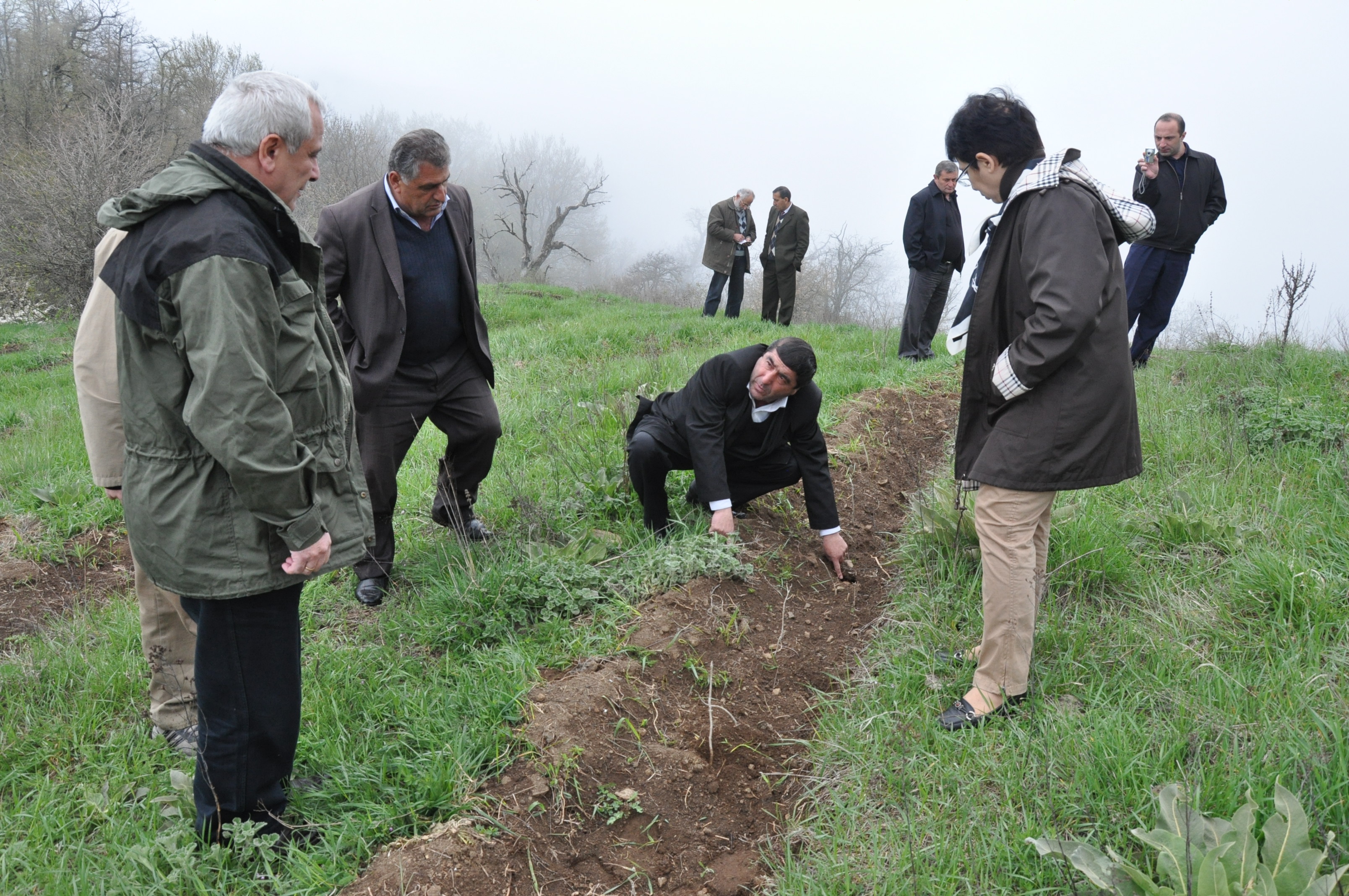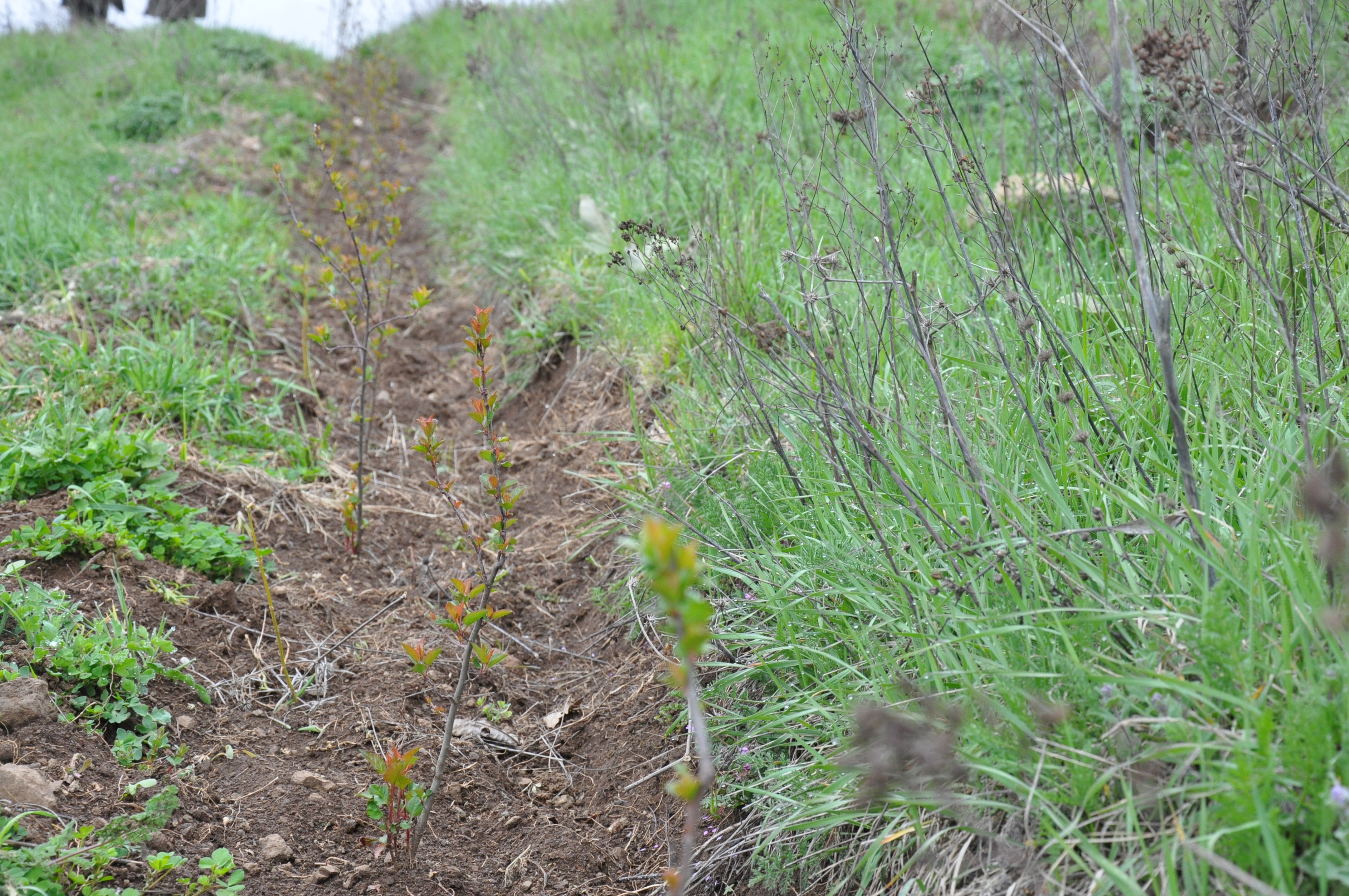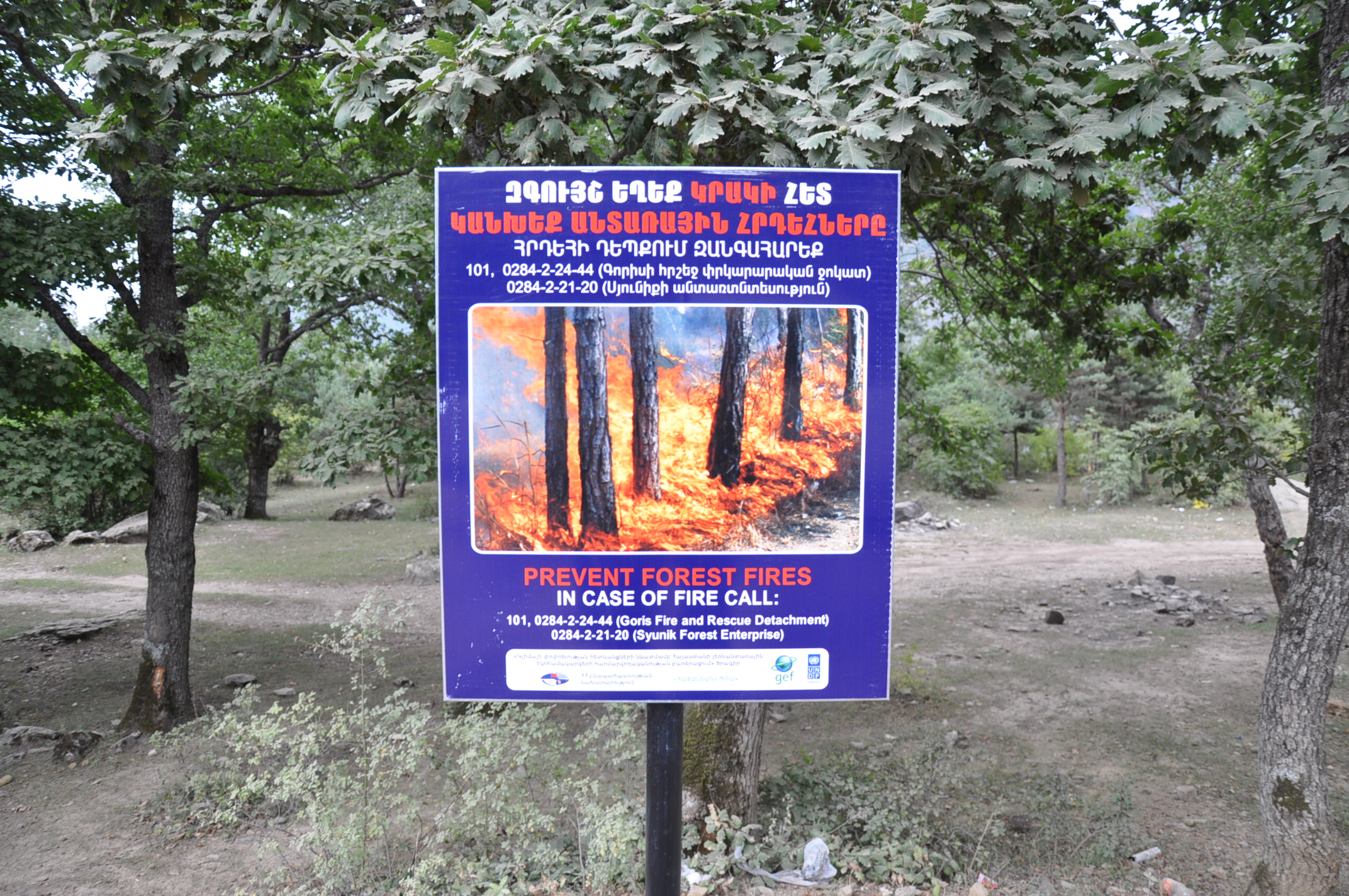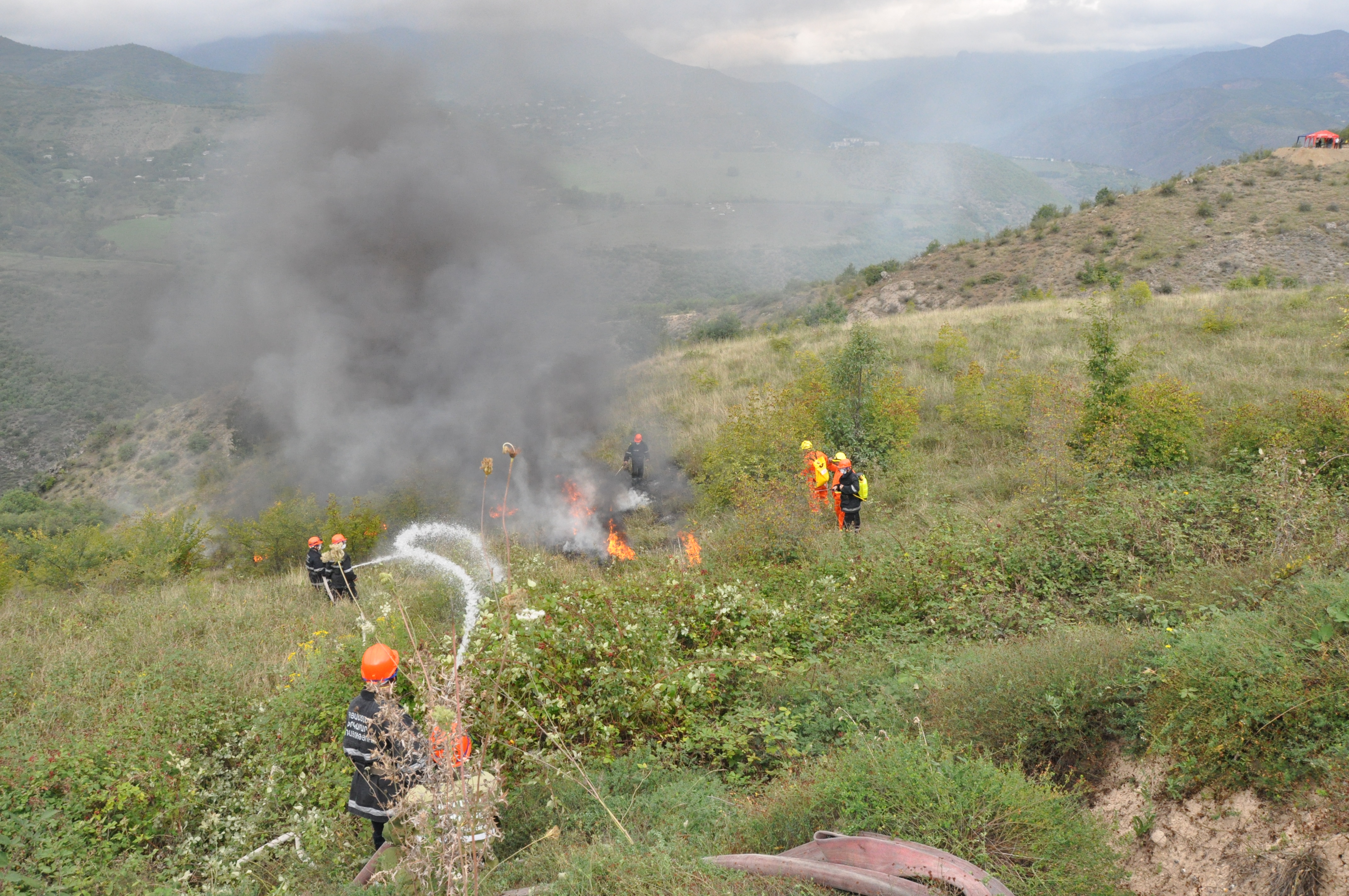Adaptation to Climate Change Impacts in Mountain Forest Ecosystems of Armenia
Project Overview
Containing more than half the region’s floral diversity and over 300 species of trees and bushes, Armenia’s forest ecosystems form a vital eco-corridor that extends through the Eastern Lesser Caucasus. Although these forests are a biodiversity hotspot and a global conservation priority, the region has been identified as critically vulnerable, especially to the risks posed by climate change.
Given the significant value of preserving the area’s biodiversity, this project focused on enhancing the forest’s resilience through improving ecological restoration, preventing forest fires and fighting pests.
For updates on UNDP Early Warning Systems and Climate Resilient Development projects, click here.
Project Details
The climate of Armenia’s Syunik region is remarkably diverse due to its complex topography. The high altitude above sea level, orientation of the mountain ranges, and occluded borders of the river valleys and basins has a notably large impact on the local climate. In general, the climate is quite dry owing to the high elevation of the terrain above sea level and its relief. The annual precipitation in the Syunik region is irregular, as is the distribution of the rainfall, which varies dramatically in certain areas and increases with elevation. Analysis of observed data from 1978-2007 shows that there has been a significant reduction of precipitation in the area. Projections based on statistical analysis suggest that a further reduction of precipitation is very likely during the next 2-3 decades. Although it is less alarming than reductions in precipitation, air temperature increases have been reported. Average air temperature during the period of 1935-2007 has increased by 0.7°C during the summer season.
If climate change scenarios become reality, based on these projections, more than 17,000 hectares of forest might disappear in Armenia as a result of the worsening forest growth conditions (5-5.5%). Expected climate changes could adversely affect forest ecosystems by worsening sanitary conditions, enlarging the spread of pests and diseases and increasing fire hazards. In this case, forests in the southeastern forested areas will be the most vulnerable. Moreover, with the expected temperature increases in the already arid climate, the probability of more intensive forest fires will rise. This particular danger is more imminent for forests in central, southern and southeastern forested areas.
In response to the problems outlined above, the project Adaptation to Climate Change in the Mountain Forest Ecosystems of Armenia has been designed to help Armenia develop strategies to cope with the consequences of climate change. In order to enhance the adaptive capacities of the vulnerable mountain forest ecosystems in the pilot region, the project will undertake activities in the Goris and Kapan districts of Syunik and also in “Arevik” National Park in Meghri district. Selected adaptation measures aim to reduce forest fragmentation, improve ecological restoration and mitigate increased pest outbreak and forest fire risks exacerbated by climate change. With a high value placed on long-term monitoring and careful project documentation, lessons from the project are expected to be replicated in other mountain forest ecosystems of central and northern Armenia.
Key Results and Outputs
Outcome 1: The enabling environment for integrating climate change risks into management of forest ecosystems is in place.
- Output 1.1: Planning documents that govern forest management modified to take account of climate change risks
- Output 1.2: An early warning and response system to climate change risks based on clearly defined institutional roles and responsibilities
Outcome 2: Forest and protected area management in the Syunik region integrates pilot adaptation measures to enhance adaptive capacity of mountain forest ecosystems
- Output 2.1: Comprehensive system for data collection and interpretation to feed into scenario development and identification of adaptation measures
- Output 2.2: Measures to mitigate elevated pest outbreak risks due to climate change, including variability
- Output 2.3: Measures to mitigate elevated forest fire risk due to climate change, including variability
- Output 2.4: Measures to reduce forest fragmentation and improve ecological restoration
Outcome 3: Capacities for adaptive management, learning and replication of project lessons are developed.
- Output 3.1: Training and sharing of experiences with foresters and community members from other regions/ sub-regions in Armenia to develop their capacities to integrate adaptive measures in forest management
- Output 3.2: A user-friendly manual on how to integrate climate change risks in forest management is developed and widely disseminated
- Output 3.3: A results-based monitoring, evaluation and learning system is in place
Reports and Publications
Knowledge Products
Building resilience through integrated climate change adaptation and disaster risk reduction: experience of Armenia
Case Study
Building Wildfire Management Capacities to Enhance Adaptation of the Vulnerable Mountain Forests of Armenia - Lessons from Recent Experience
Assessments and Background Documents
ProDocs
Brochures, Posters, Communications Products
Monitoring and Evaluation
Project monitoring and evaluation will be conducted in accordance with established UNDP and GEF procedures by the project team and the UNDP Country Office (UNDP-CO), with support from the UNDP/GEF Regional Coordination Unit in Bratislava. The Logical Framework Matrix provides performance and impact indicators for project implementation along with their corresponding means of verification. The logframe is developed based on UNDP/GEF impact monitoring framework at adaptation project level, specifically, technical paper (TA) on natural resource management.
Since the proposed project falls under the following broad category – “The reduction of anthropogenic stresses on resources experiencing increased stress due to climate change, and enhancement of the resilience and adaptive capacity of natural systems in order that they are sustained in the face of climate change” – the corresponding indicators have been customized. Main indicators are designed to help detect (i) introduction of new policies, regulatory frameworks and management plans that are devised based on scenario planning; (ii) reduction in ecosystem fragmentation containing natural resources of concern, leading to enhanced resilience (iii) Number of sites/locations where stress reduction measures are piloted (iv) learning and replication potential..
Additionally, given that the target of adaptation measures is globally significant ecosystems, the project team has been guided by the GEF’s METT (Tracking Tool for SP2- Mainstreaming Biodiversity) in identifying indicators for measuring the biodiversity benefit of additional adaptation measures. Based on a review of the METT proxy indicators, two indicators (one relating to territorial coverage (ha) and the other to integration of adaptation measures in the forest sector management planning documents) have been selected. Logframe indicators will form the basis on which the project's Monitoring and Evaluation system will be built.
In addition, Output 3.3 of the project relates specifically to monitoring, evaluation and adaptive management capacities over the long term through the establishment of a long term monitoring programme. The M&E plan includes: inception report, annual project implementation reviews, quarterly operational reports, and independent mid-term and final evaluations. GORA will provide the Resident Representative with certified periodic financial statements, and with an annual audit of the financial statements relating to the status of UNDP (including GEF) funds according to the established procedures set out in the Programming and Finance manuals. The Audit will be conducted by the legally recognized auditor of the Government, or by a commercial auditor engaged by the Government.
The project's Monitoring and Evaluation Plan will be presented and finalized at the Project's Inception Meeting following a collective fine-tuning of indicators, means of verification, and the full definition of project staff M&E responsibilities.












